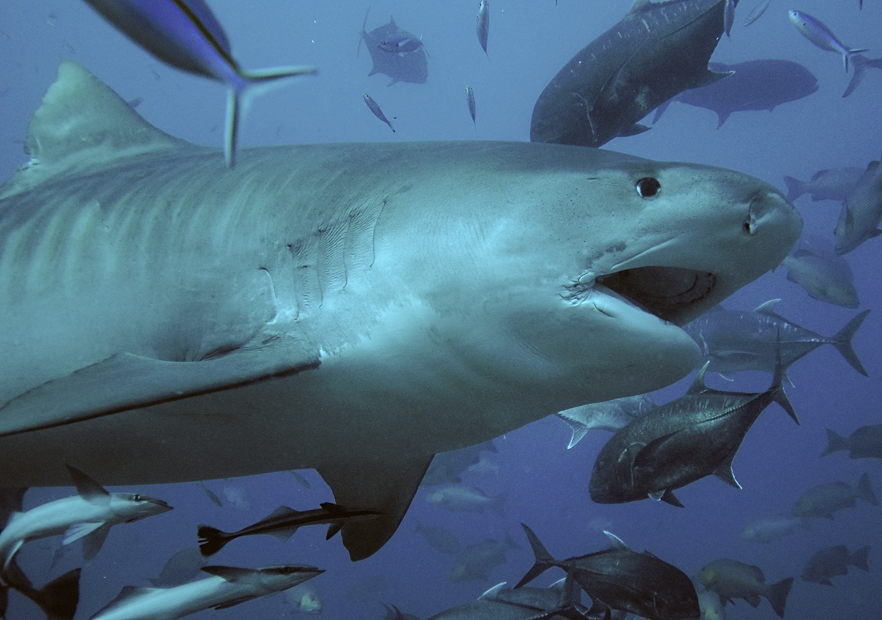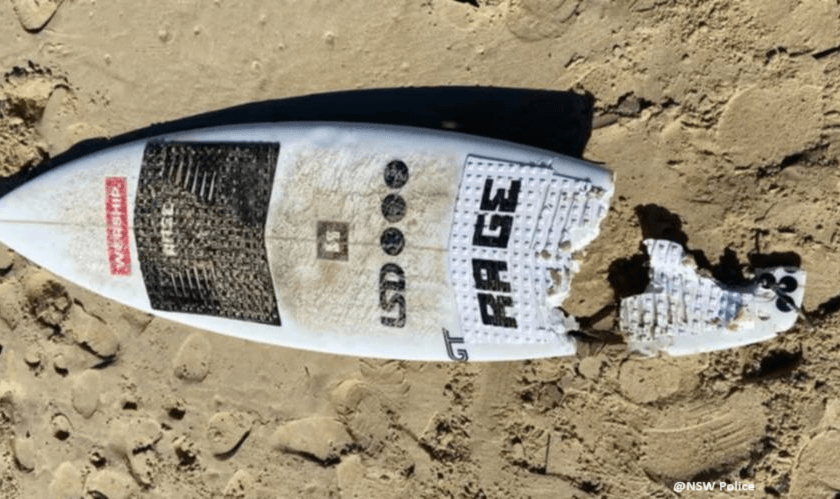Today we have the pleasure of sharing our interview with shark photographer George T. Probst.
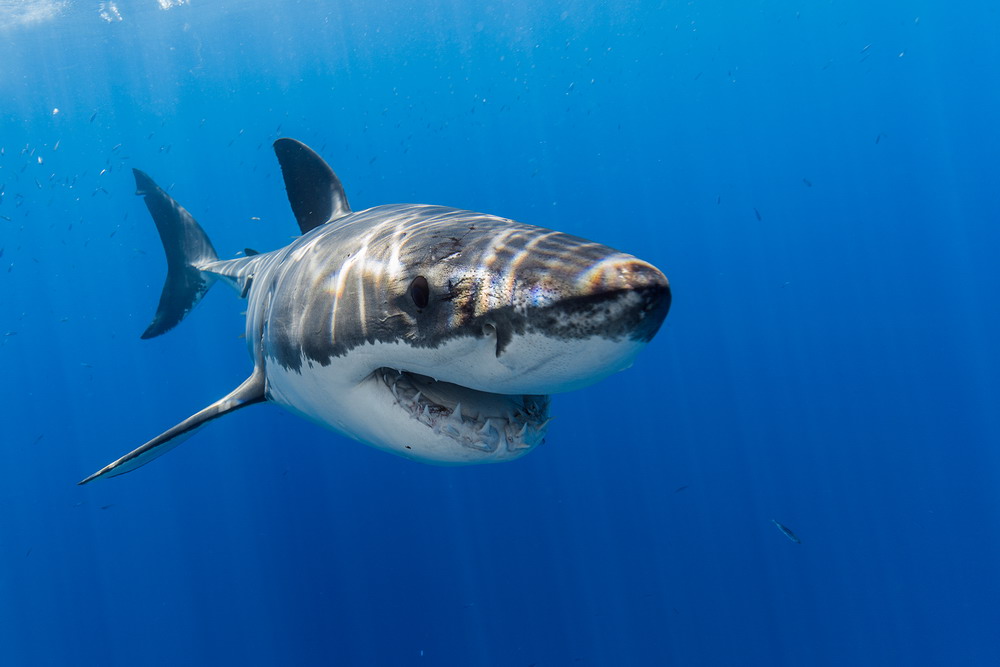
If you follow Tracking Sharks on Twitter, then you have probably seen some of his beautiful photographs of great white sharks. He is one of our favorite people to reTweet, as he really has a knack for capturing the majestic beauty of sharks.
Let’s start with a little background on how you got started taking shark photographs. When was your first shark dive, and was it in a cage?
My first great white shark dive was in 2006. I had never been SCUBA diving before and was not certified, so I was limited to doing cage dives in what is known as a surface cage. This particular type of shark diving uses a cage, in which the top floats on the surface. The deepest you can go in the water is about 10’ (3m) deep, if you’re at the very bottom of the cage. I started SCUBA in the spring of 2007 and was able to dive with nurse sharks, bull sharks and whale sharks about a month after I earned my open water certification.
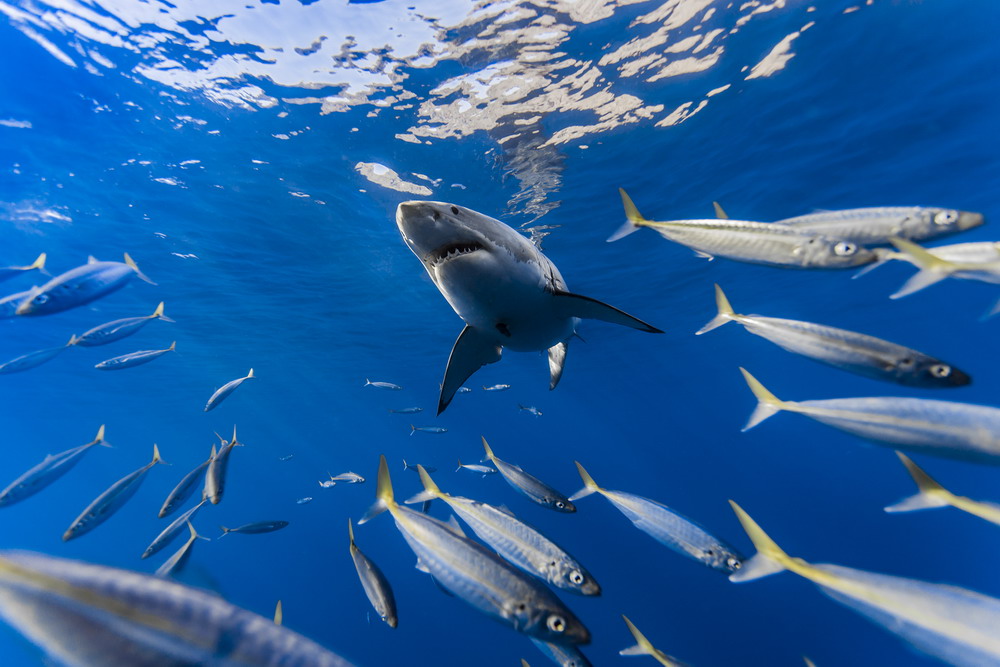
Wow, seeing a great white before you got certified! I can see why you wanted to get your SCUBA certification. I know you often take photographs of white sharks at the Isla Guadalupe, Mexico. How do they attract the sharks and how quickly do they show up?
The sharks naturally aggregate at Guadalupe during the autumn months, but most (if not all) of the dive operators use chum made from local tuna. The amount of time it takes for sharks to show up varies. I’ve seen sharks from the deck of the boat before we were even anchored on some trips, while on other trips you might wait around for hours at a time without seeing any sharks. The sharks come and go as they please, as well, so you might have sharks around for a while and then not see any again for a long time.
Chum is basically just fish parts tossed in the water and this attracts the sharks that are looking for a meal. Have you ever seen sharks acting aggressively?
Tail slapping is considered to be a potential threat display or agonistic behavior for white sharks. In 2008, I saw a large female tail slap the side of a dive boat multiple times, so it’s possible that particular shark was attempting to establish herself as the dominant individual at the scene. I have also seen some photos of a diver who was open water diving at Guadalupe (which is prohibited at the island without special permission from the government), in which a smaller male was displaying threat posturing, but I haven’t witnessed anything of that nature firsthand.
Having a large white shark tail slap the boat could be nerve wracking. Have you ever had any close calls in the water?
No, not with the sharks. I’ve seen sharks bump cages a few times, but it seemed to generally be incidental contact.
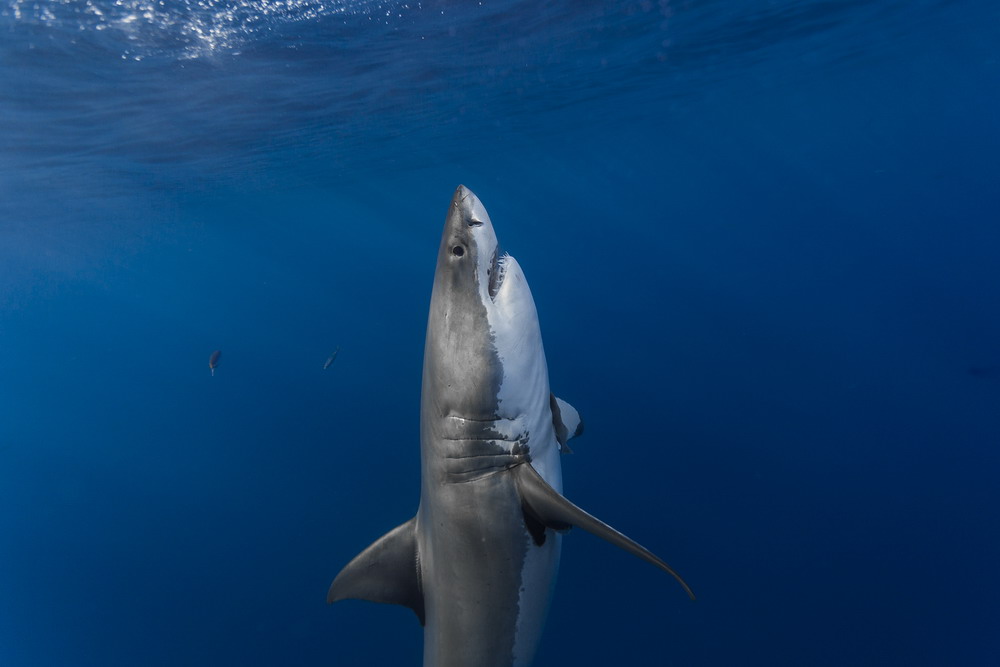
Speaking of the cages, do you use SCUBA on the deep cage dives?
I’ve been down in three different types of submersible cages, and in all three cases, continuous air was supplied via a regulator on a hookah, so you aren’t actually using a SCUBA tank, though there are SCUBA tanks in the corners of the cages in the event of an emergency.
Gotcha. They have emergency bailout bottles in case the main hookah line, which supplies air, should become unusable. While SCUBA diving, it’s always important to have a redundant source of air. Is the cage lowered directly from the boat, how do they know when to raise it and are there emergency exit procedures?
The cage is raised and lowered via the boat’s on-board crane. The divemaster is in continuous contact with a crew member who has access to raise and lower the cage via live audio and video. The procedure for returning to the boat in the event of an emergency, is to head to the stern of the boat, where the surface cages are, and exit the water via the surface cages.
Do the sharks come near the deep water cage?
Some of the more curious sharks will come in close proximity of the submersible cages, while others keep their distance. It depends on the personality of the shark. The same goes for the surface cages. Many individuals are leery of divers and tend to steer clear.
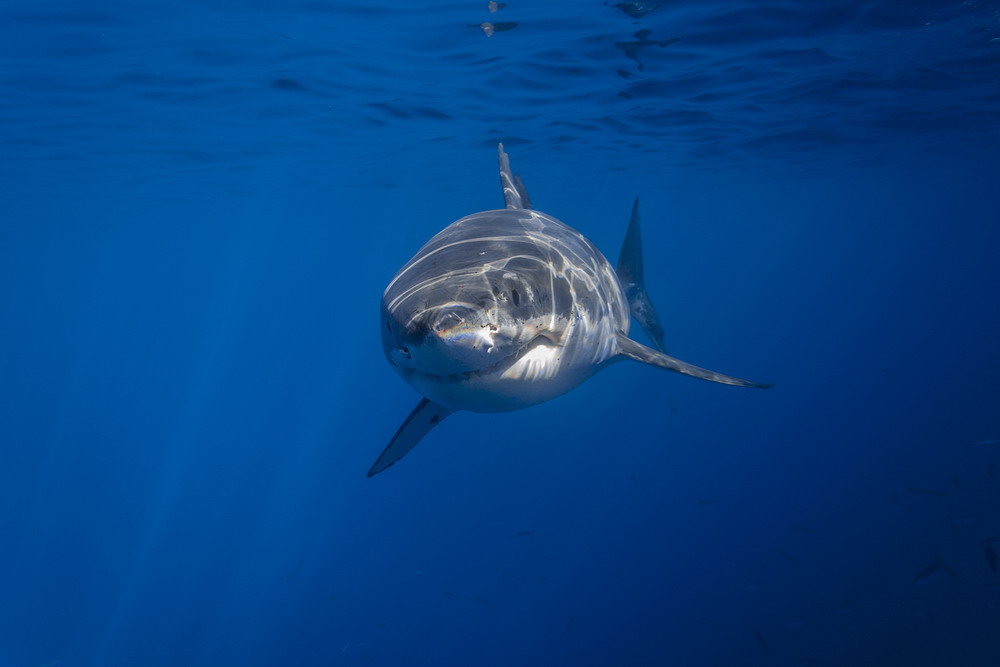
It still amazes me how sharks tend to have their own personalities. You often Tweet photos of a shark named Cal Ripfin. Is he still your favorite shark and who gets to name them?
Absolutely. He was one of kind, and Guadalupe just isn’t the same without him.
The sharks are given nicknames as part of the ongoing identification research project at Guadalupe. Various people have named the sharks over the years, including crew members on dive boats, photographers, researchers, and those who donate to the research projects at the island.
Have you seen other sharks besides whites?
Not at Guadalupe. On occasion they have seen other species, but it’s very rare. I have seen various other species of sharks at other dive sites, though.
Mr. Probst shared so much great information; we are breaking the interview into two parts. In the meantime be sure to visit www.sharkpix.com to see his other photos and purchase prints of your favorites. Our interview with Great White Shark Photographer George T. Probst, Part 2 is here.
